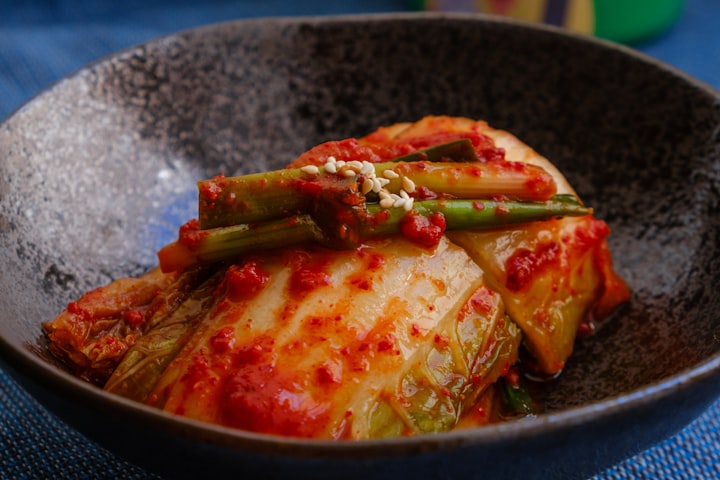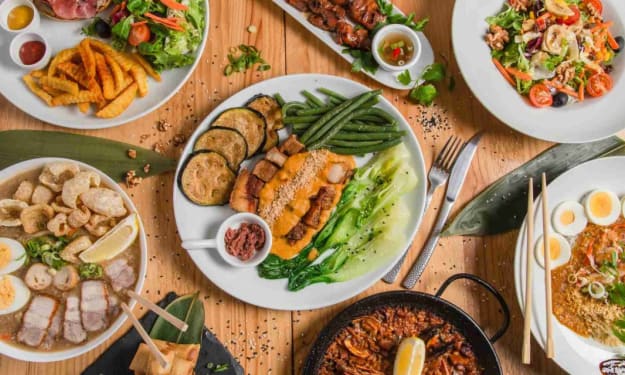
Now, you may have heard of kimchi when going out to KBBQ with some co-workers or friends. But what exactly is kimchi? As a Korean-American, I've been eating kimchi, mother's homemade kimchi, all my existing life. Eating kimchi as a banchan (반찬 / side-dish), within a main dish or in a stew (김치찌개).
Super Mini History Lesson?
When was it first discovered? Well...that is a little difficult as there are many, and I mean more than two, different kinds of kimchi. From what was told from the older generation, the parents & grandparents, it was known way back then! Lets say about 2000+ years?
How Is It Made?
As I have mentioned previously, there are a lot of kimchi types. However, the most likely known is made from salted & fermented vegetables, mostly known to use Napa cabbage as the main star or using the Korean radish (무), and using variety of seasonings including gochugaru (고추가루 / chili powder), spring onions, garlic, onions, ginger and jeotgal (젓갈 / salted seafood). You can store kimchi in a onggi (earthenware pot) or can use a BPA-free container or a glass container.
When storing for the fermentation process (BPA-free container / glass container), there can be kimchi juice leakage, so if keeping them at a room temperature to ferment on the counter-top, keep a tray underneath for easier clean up. For onggi storage for kimchi, have not yet experienced with leakage. Keep in mind that leakages are normal. You can remove some of the excess liquid, but try to have the kimchi juice covering the top layer so it can ferment nicely! :)
The Variety
Besides the the powerhouse of the cabbage & radish, here is a list of different types of kimchi you can find or try to make at home.
- Baek-Kimchi (White Kimchi): Is the opposite (as the name itself explains) of bright red spicy (depending on your spice level) kimchi. If you are not a fan of the spice then this is recommended.
- Baechu Kimchi (Cabbage Kimchi): The main star that is the most known. Same as the Baek-Kimchi, but on the spicier side. If you like more of kick, this is for you!
- Kkakdugi (Cubed Radish): The Kkakdugi is the one you would most likely see along side with the Baechu Kimchi at the KBBQ joints. Kkakdugi uses the Korean radish or you can use daikon.
- Dongchimi (Radish Water Kimchi): Dongchimi is radish with a cold broth. Usually the sweeter the radish, the better the broth would taste. This dish is kept chilled.
- Chonggak (Ponytail Radish): Yes, as you guessed it, this one has green ponytail on the radish! Uses a different kind of radish comparing to Kkakdugi.
Now there are two other types I recommend.
- Oi Kimchi (Cucumber Kimchi): A quick kimchi using cucumbers. Can use Lebanese cucumbers for this dish.
- Oi Sobagi (Stuffed Cucumber Kimchi): As the name tells all, this variety has stuffed vegetables. It is primarily used with Kirby cucumbers.
Why Eat Kimchi?
It is a all around good food for your body.
- Low on calories but full of nutrition.
- Contain probiotics
- Easy to make at home
- Delicious!





Comments
There are no comments for this story
Be the first to respond and start the conversation.